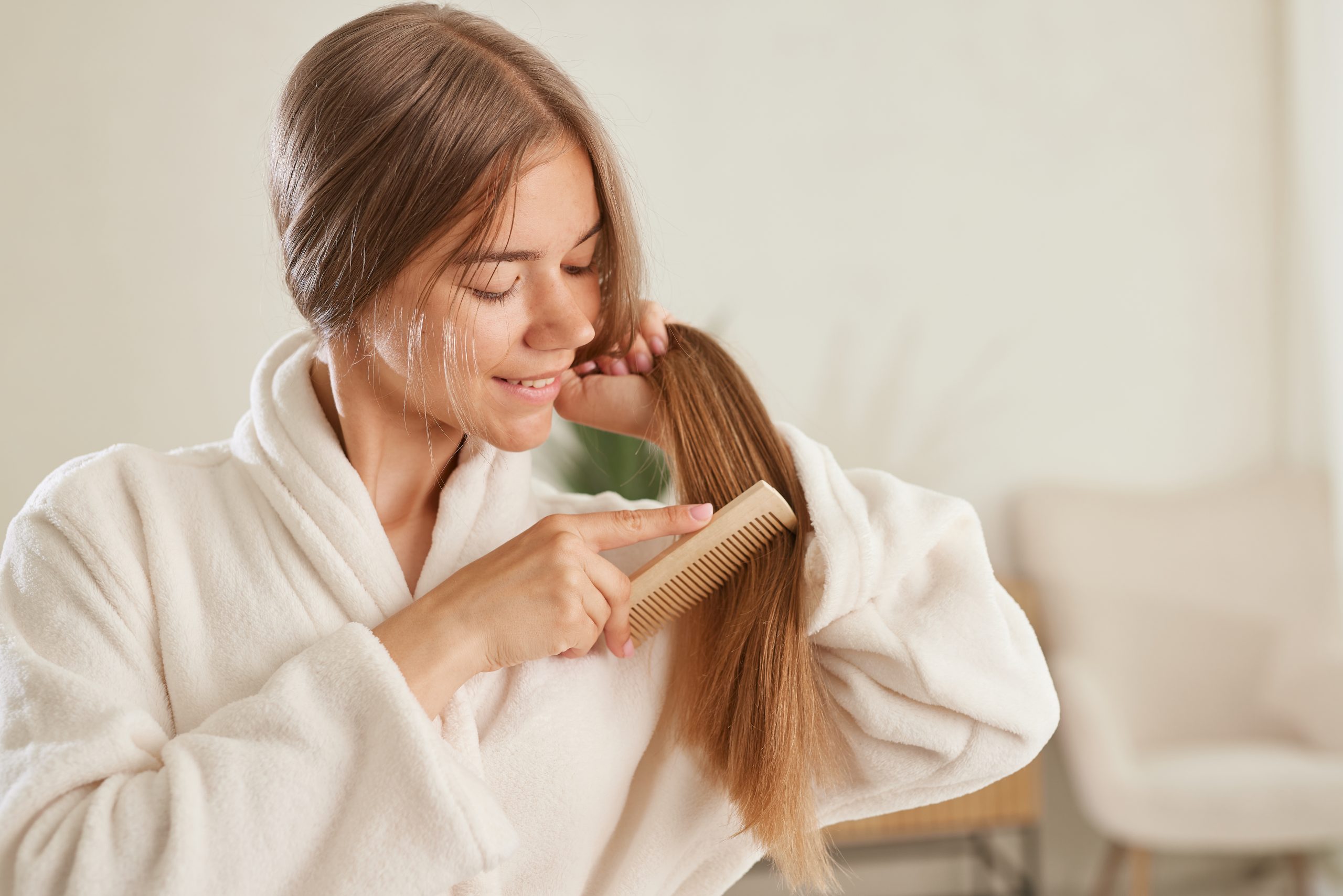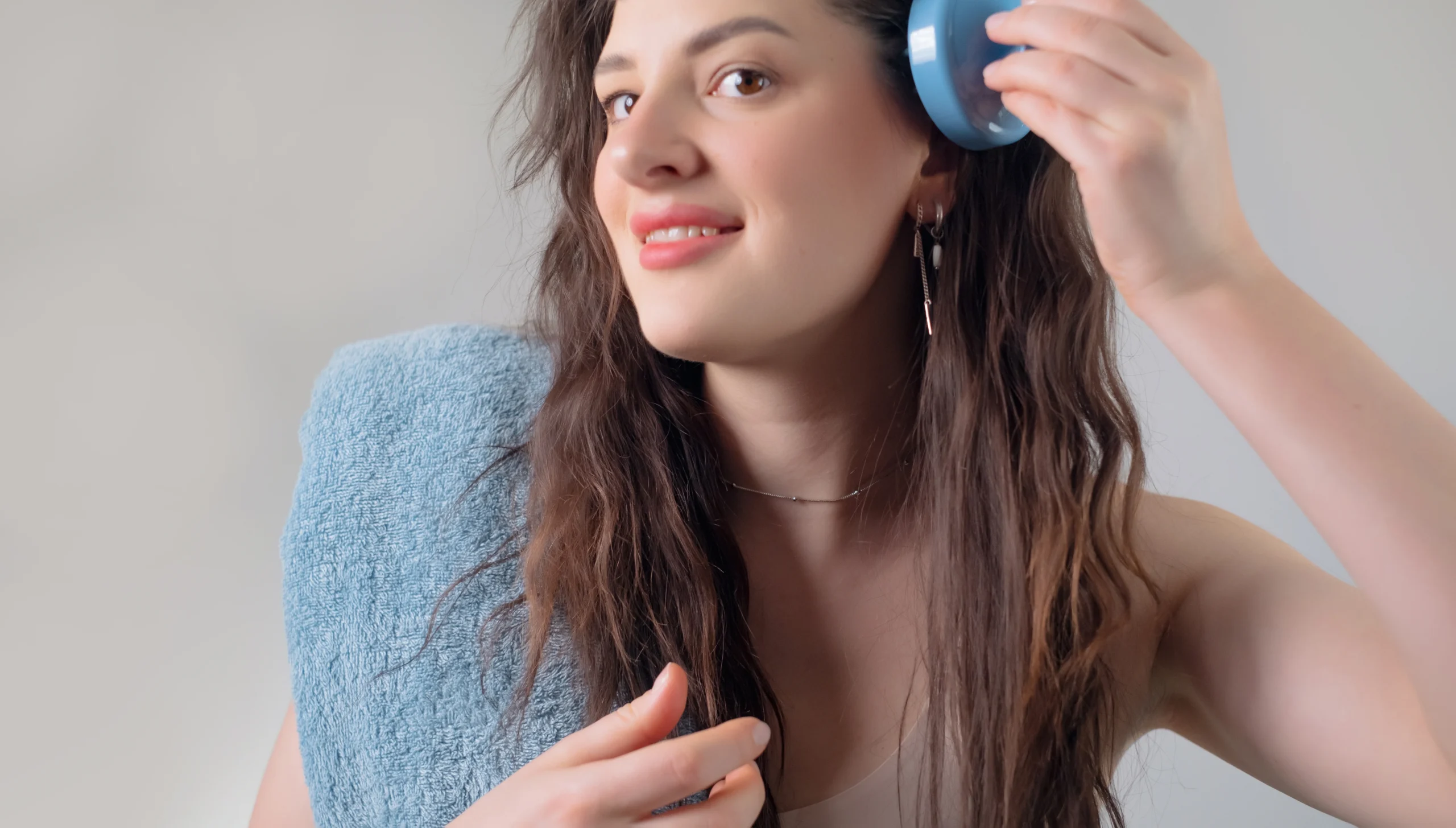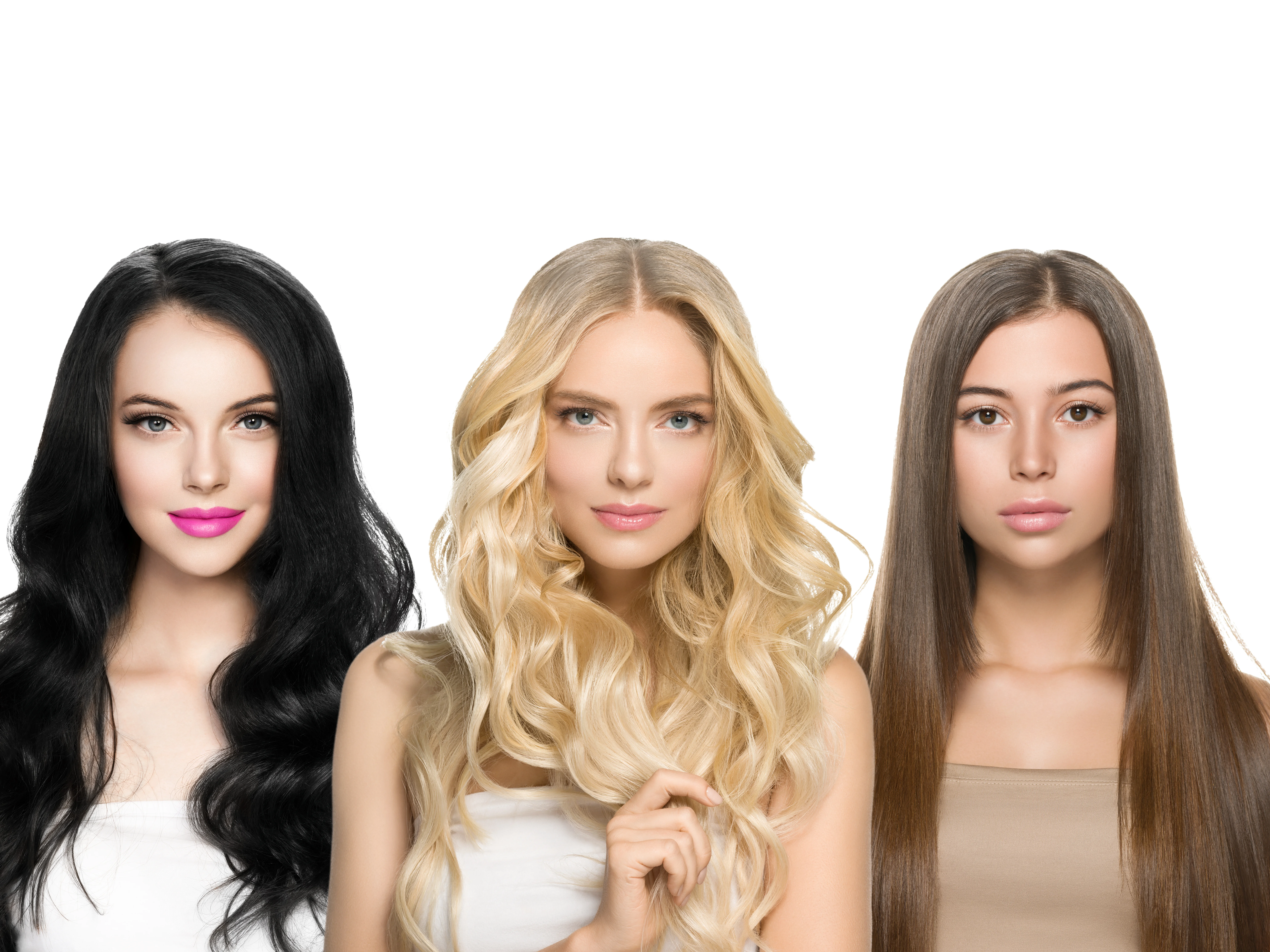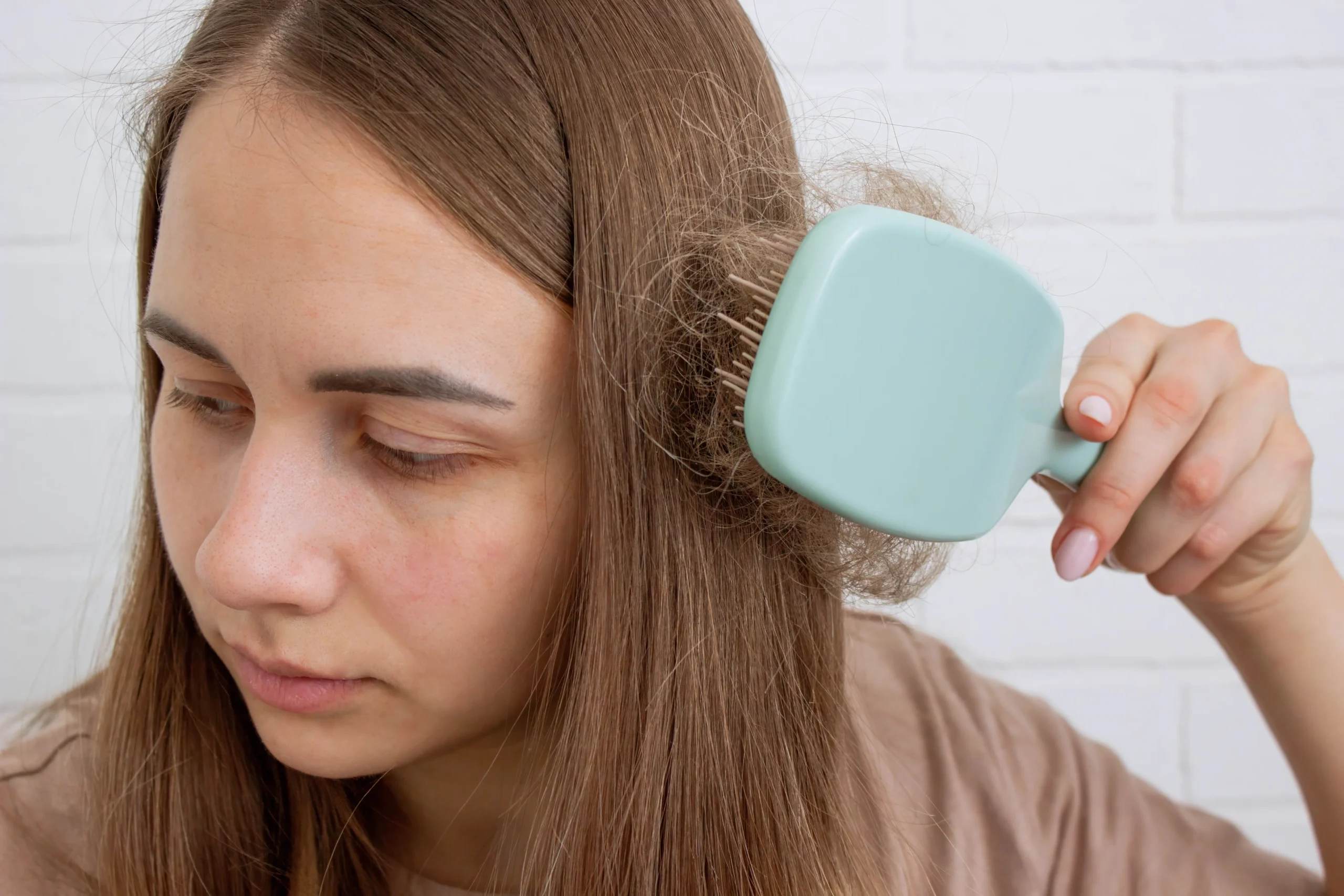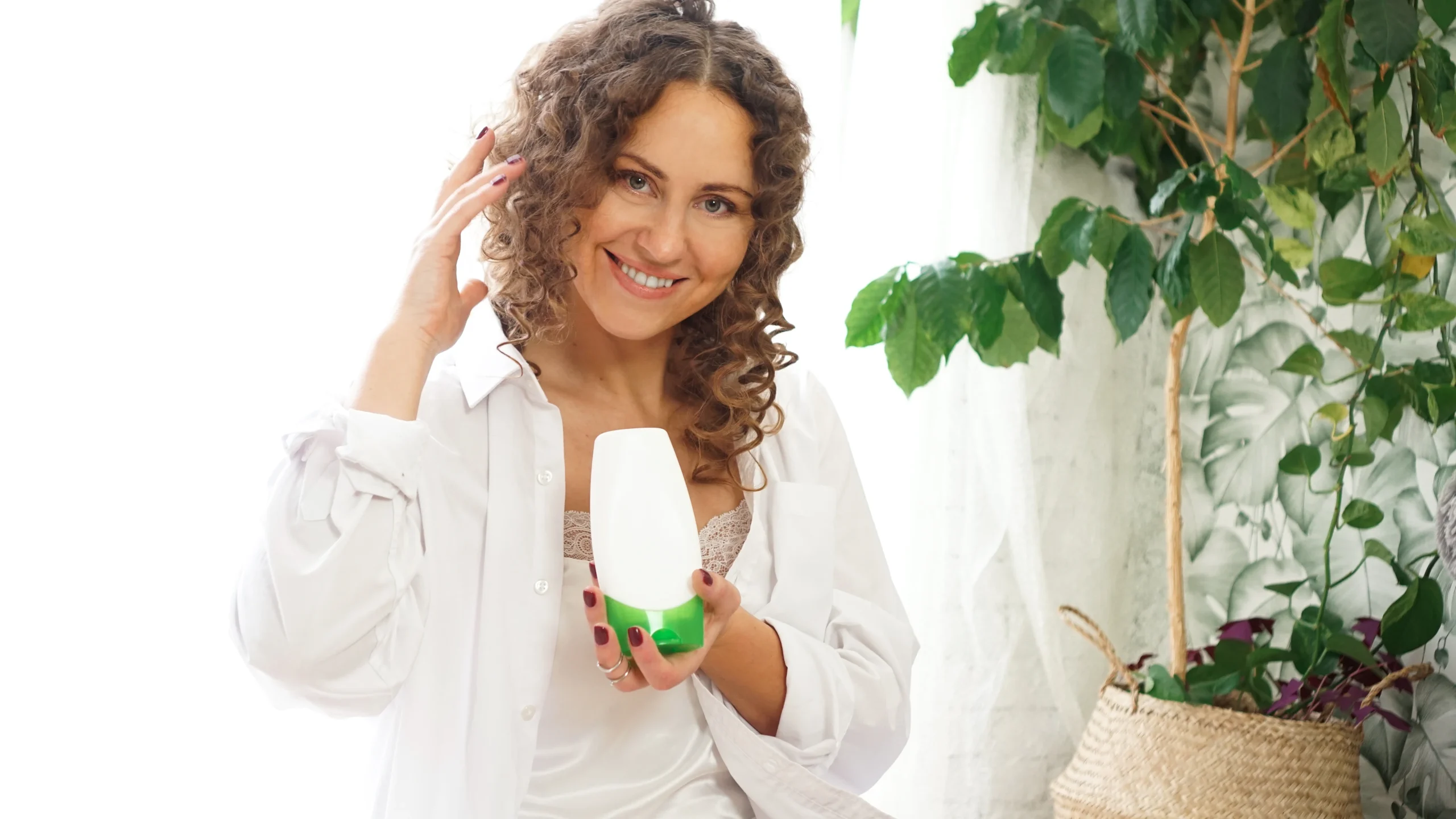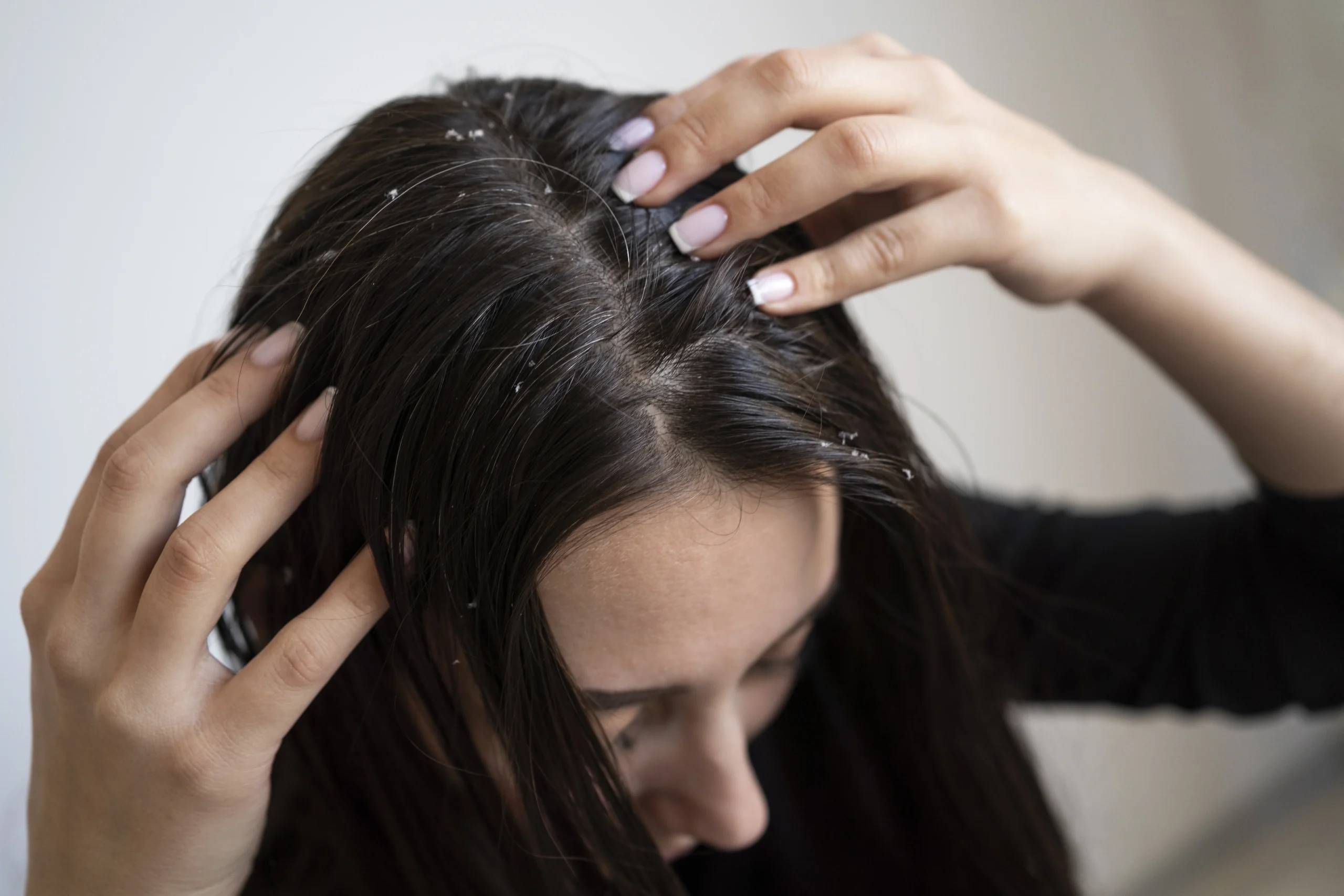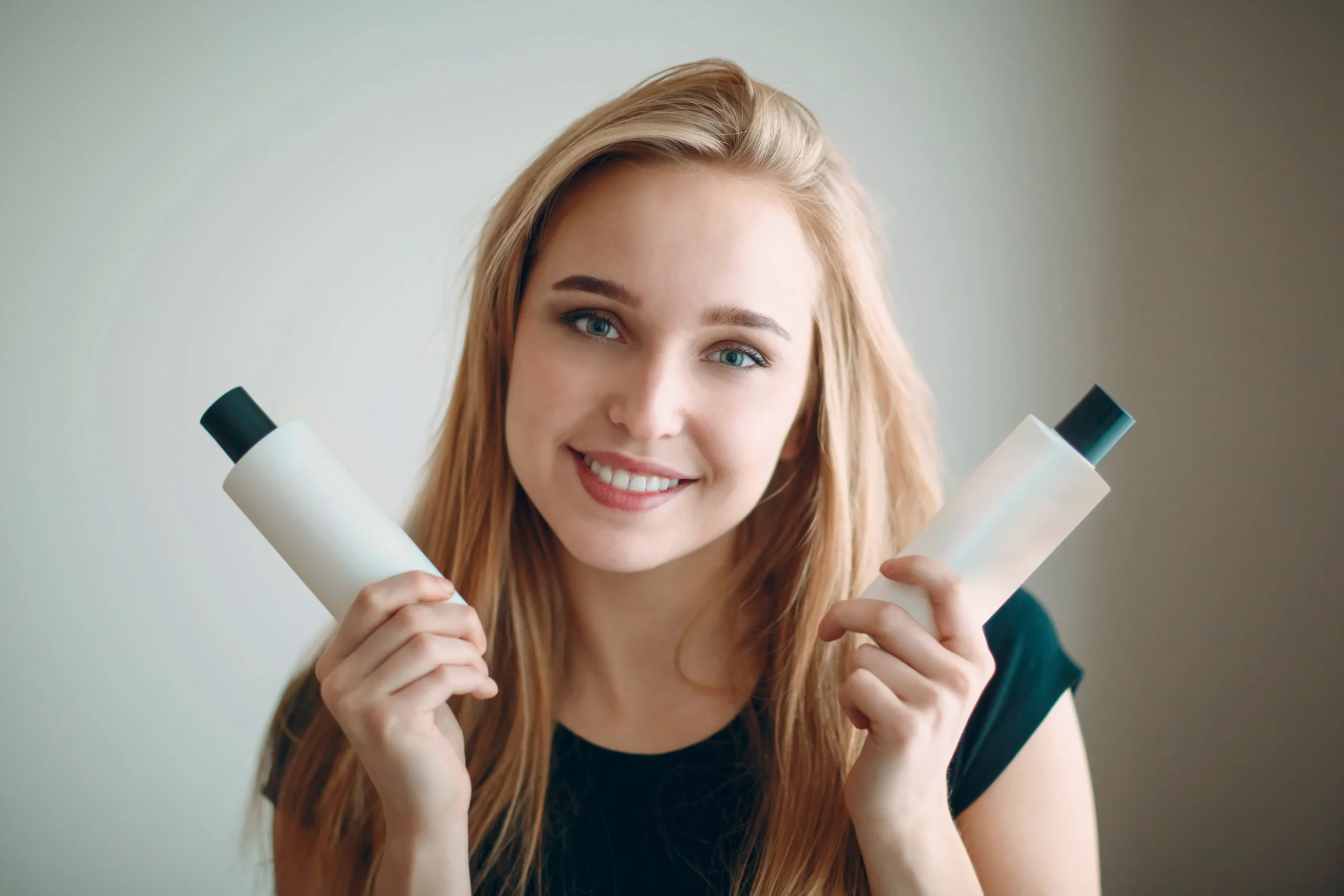Why a Natural Hair Care Routine Is Essential
A consistent hair care routine for natural hair isn’t just a beauty habit – it’s a commitment to nurturing your crown with love and care. Natural hair has its own texture and curl pattern and requires purposeful care to keep it healthy, moisturized, and flexible. If you have a protective style like twist-outs, afros, or braids and buns, the health of your hair depends on a specific routine that suits your needs.
A Big Misconception about the natural hair journey is that “natural” means “easy.” But in reality, without proper care, this hair can easily become dry, brittle, and break. That’s why a complete hair care routine is so important. From daily moisture protection to monthly deep treatments, each step helps maintain curl definition, reduce shedding, and promote hair growth.
Also, taking care of your natural hair is not just about making an external change; it is a way to reclaim your identity, heritage, and confidence. A proper routine not only supports the physical health of your hair, but it is also connected to self-love and cultural pride.
Understanding Your Hair Type And Porosity
Knowing your hair type is the first step to developing a successful hair care routine. Natural hair comes in various textures- from loose curls like 3A to the curly locks of 4C – and each type has different moisture needs, shrinkage levels, and styling characteristics.
Porosity, on the other hand, determines how well hair absorbs and retains moisture.
Low-porosity hair has a harder time absorbing products, so light, water-based products and heat are necessary to open the cuticle. High-porosity hair absorbs and loses moisture quickly, so heavy butters and oils are essential to seal in moisture.
Knowing these two things will help you select the right products, create effective wash-day habits, and avoid unnecessary damage.

How Natural Hair Texture Affects Your Routine
Each curl type reacts differently to products. For example, 4C hair, which has very tight curls and is not naturally oily, prefers thicker creams and regular deep conditioning. On the other hand, 3A or 3B curls can feel weighed down by heavier products and work best with lighter leave-in conditioners and gels.
Additionally, together texture is more prone to frizz and tangles, so finger detangling and protective styling are essential for this type of hair. Relatively soft curls require styling tools or curl-enhancing mousse to maintain definition.
Your hair’s natural texture should be the foundation for your routine. What works for one person may not work for another, and that’s completely normal.
Daily Care Routine for Natural Hair
A good hair care routine for natural hair starts with daily care. Moisture is the most critical need for natural hair, especially hair exposed to dry climates or regularly styled.
Every morning, lightly mist your hair with water or a hydrating spray. Then, moisten a light leave-in conditioner with a nourishing oil like jojoba or avocado. This simple process, called the “LOC” (Liquid-Oil-Cream) or “LCO” (Liquid-Cream-Oil) method, helps lock in moisture throughout the day.
Night care is equally important. Always sleep in a satin bonnet or use a silk pillowcase to reduce friction, reduce frizz, and retain moisture. Tying your curls in a pineapple style or sleeping in a light braid/twist helps maintain hair definition.
Effective Method of Retaining Moisture
The key to natural hair care is learning to retain moisture. First, understand that water is the best moisturizer. Always apply the product to wet hair so that it absorbs well.
Layering is essential. If your hair is low porosity, use the “LOC” method. If it is high porosity, choose the “LCO” method. Experiment with different leave-ins, creams, and oils to see which combination works best for your hair.
Steam treatments are also very beneficial. Using a hair steamer or hot towel opens the hair cuticles, allowing moisturizers and conditioners to penetrate more deeply.
Protective Styling for Long-Term Growth
Protective styles aren’t just for outward beauty-they protect your hair from environmental stressors and minimize daily manipulation, which reduces breakage.
Popular styles like box braids, twists, bantu knots, or wigs break your hair from regular styling and help retain moisture. But don’t forget to take care of your scalp during this time. Keep your scalp clean, moisturized, and free of product buildup.
Don’t make protective styles too tight, as this can cause traction alopecia and damage your hairline. Take a break between each installation to allow your scalp and hair to receive a deep treatment.
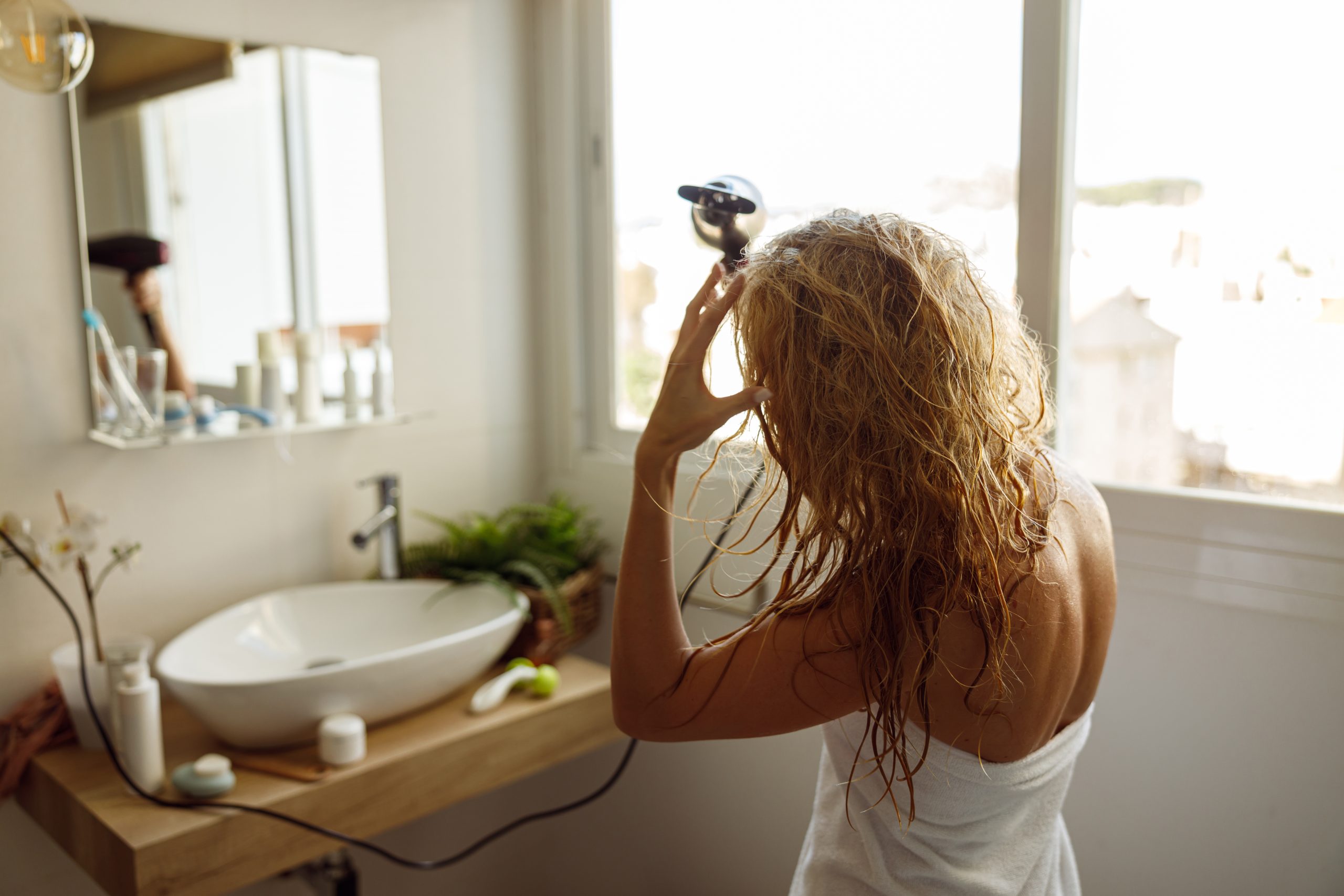
Weekly Care Routine For Natural Hair
Regularity is essential when it comes to wash days. Washing your hair once a week or two will help remove product buildup and environmental dirt while keeping the important natural oils in it.
Regularity is essential when it comes to wash days. Washing your hair once a week or two will help remove product buildup and environmental dirt while keeping the important natural oils in it.
When detangling hair, section it and use a wide-tooth comb or your fingers. Apply a generous amount of conditioner and, if necessary, a detangling brush, working from the bottom up.
Deep Conditioning: How Often To Do It and Why It’s Important
Deep conditioning isn’t a luxury-it’s an essential part of a natural hair routine. It should be done at least once weekly to keep hair supple, soft, and manageable.
Use a deep conditioner that contains humectants like glycerin or honey and strengthening ingredients like hydrolyzed protein, especially if you’ve used heat or color.
To further enhance the benefits of this treatment, use a heating cap or a hooded dryer. This opens the hair cuticle and allows the ingredients to penetrate deeper.
Clarifying vs. Co-Washing: Striking The Right Balance
Washing with conditioner or co-washing is excellent for locking in moisture, but it doesn’t thoroughly cleanse the scalp. That’s why clarifying is necessary.
Use a clarifying shampoo monthly to remove excess oil, styling products, and mineral buildup from hard water. Follow up with a rich, deep conditioner to rehydrate your hair.
Striking the right balance between cleansing and conditioning will keep your hair clean, soft, and shiny, without the risk of dryness or roughness.
Monthly Treatment for Strong and Healthy Hair
A monthly treatment is a “reset button” for your hair in a successful natural hair care routine. These deep treatments are specially formulated to address specific issues, like protein deficiency, excess product buildup, or scalp dirt that can’t be addressed entirely with a weekly routine. Including monthly treatments greatly improves hair strength, elasticity, and long-term health.
Protein Treatment To Restore Hair Structure
A balance of protein and moisture is essential for natural hair. Moisture keeps hair soft and flexible, but protein keeps hair strong and prevents breakage. Regular heat, styling, and environmental stress can damage hair’s protein structure.
Use a protein treatment once a month or as needed. Products containing hydrolyzed keratin, wheat protein, or silk amino acids strengthen weak, limp hair. Be mindful of how your hair feels-if your hair feels extra stiff or brittle after a protein treatment, a deep moisturizing mask is a must.
Maintaining this balance is essential: too much protein can break your hair, while too little can leave it weak and lifeless. Listen to your hair and adjust your routine accordingly.
Scalp Detox: An Overlooked Necessity
Healthy hair is not possible without a healthy scalp. Scalp care is often neglected but integral to a natural hair routine. Months of sweat, oil, styling products, and pollution can clog the scalp’s pores, leading to inflammation or even hair loss.
Detox your scalp monthly, using a clarifying scrub, clay mask, or apple cider vinegar rinse. These treatments remove dead skin cells and cleanse hair follicles, which helps promote healthy hair growth. Gently massage your scalp to increase blood circulation and strengthen follicles.
Add tea tree or peppermint oil to your detox routine, which has antifungal and antibacterial properties. A clean scalp means shiny, vibrant, and bouncy curls.
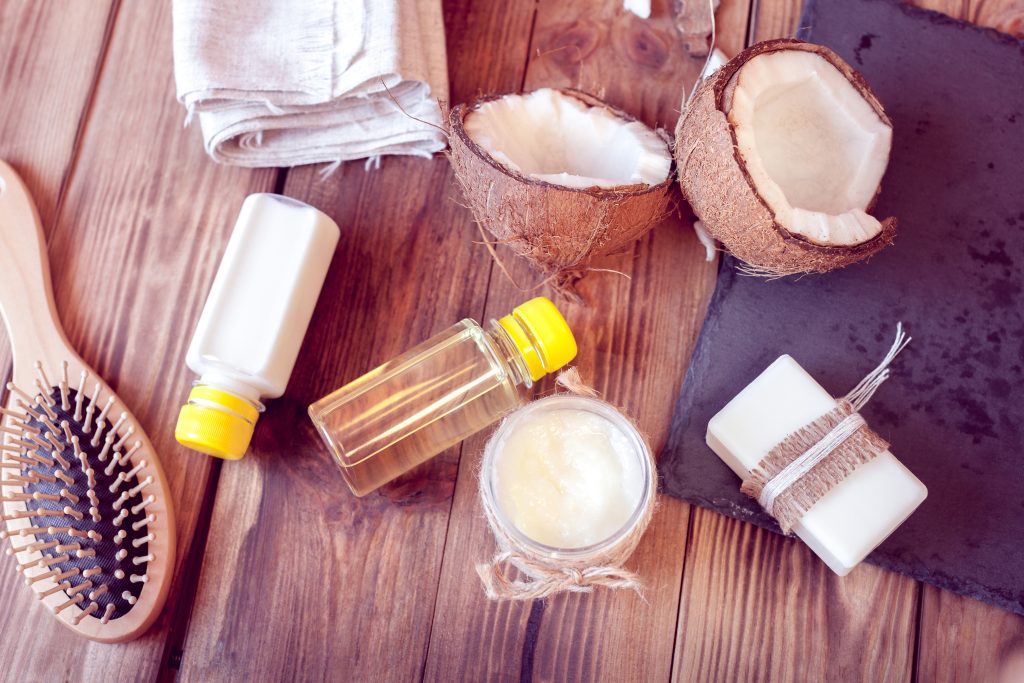
The Best Products To Use For Natural Hair
With so many products on the market today, choosing the right one can be unclear. An effective natural hair care routine should include essential products that nourish, protect, and enhance curls beautifully without causing frizz or irritation.
Leave-In, Butter, and Oil: Which One Is Right For You?
- Leave-In Conditioner: This is essential for daily moisture. Choose a lightweight formula with aloe vera, panthenol, and glycerin, which keeps hair soft but doesn’t weigh it down.
- Hair Butter: Shea and mango butter are great for locking in extra moisture, especially for coarse curls like type 4B and 4C.
- Oil: Argan or rapeseed oil is good for thin hair, while castor or coconut oil is suitable for thick hair.
Tips: If your hair is low-porosity, use the product in the L (Liquid), O (Oil), or C (Cream) method. The “LCO” method (Liquid-Cream-Oil) is more effective for high-porosity hair.
Tools and Accessories That Won’t Ruin Curls
Natural hair can easily break if you don’t use the right tools.
- Wide-tooth comb and detangling brush: Reduces hair breakage while detangling.
- Silk or satin bonnets and pillowcases: Prevent chafing and retain moisture at night.
- Microfiber towel or cotton T-shirt: Helps reduce frizz and hair breakage while drying hair.
Use heat styling tools when necessary, and use a heat protectant. Less manipulation and using the right tools will keep the curl pattern intact and reduce damage.
Diet, Hydration, And Lifestyle for Healthy Hair
Healthy hair care is not just about using external products. What you eat, how much water you drink, and how you deal with stress all affect the health of your hair—a complete natural hair care routine promises to keep your body healthy from the inside out.
Nutritional Habits To Nourish Hair Follicles
Hair is primarily made up of a type of protein called keratin. If you don’t have enough protein in your diet, your hair will become weak and grow slowly. Include the following foods for proper nutrition:
- Eggs
- Spinach
- Salmon
- Nuts and Seeds
- Avocado
Vitamins A, C, D, and E are essential for hair follicle function and scalp health. You can take a multivitamin daily if you are not getting enough from your diet. Drinking enough water keeps your hair and scalp hydrated from within.
The Role Of Stress Management In Reducing Hair Loss
Chronic stress can disrupt hormonal balance, leading to hair loss or thinning. Regular yoga, meditation, journaling, or exercise can help reduce cortisol levels and improve hair health by increasing blood circulation.
Adequate rest should not be neglected either. The body repairs itself during sleep, benefiting the hair follicles. Ensure 7 to 9 hours of sleep every day.
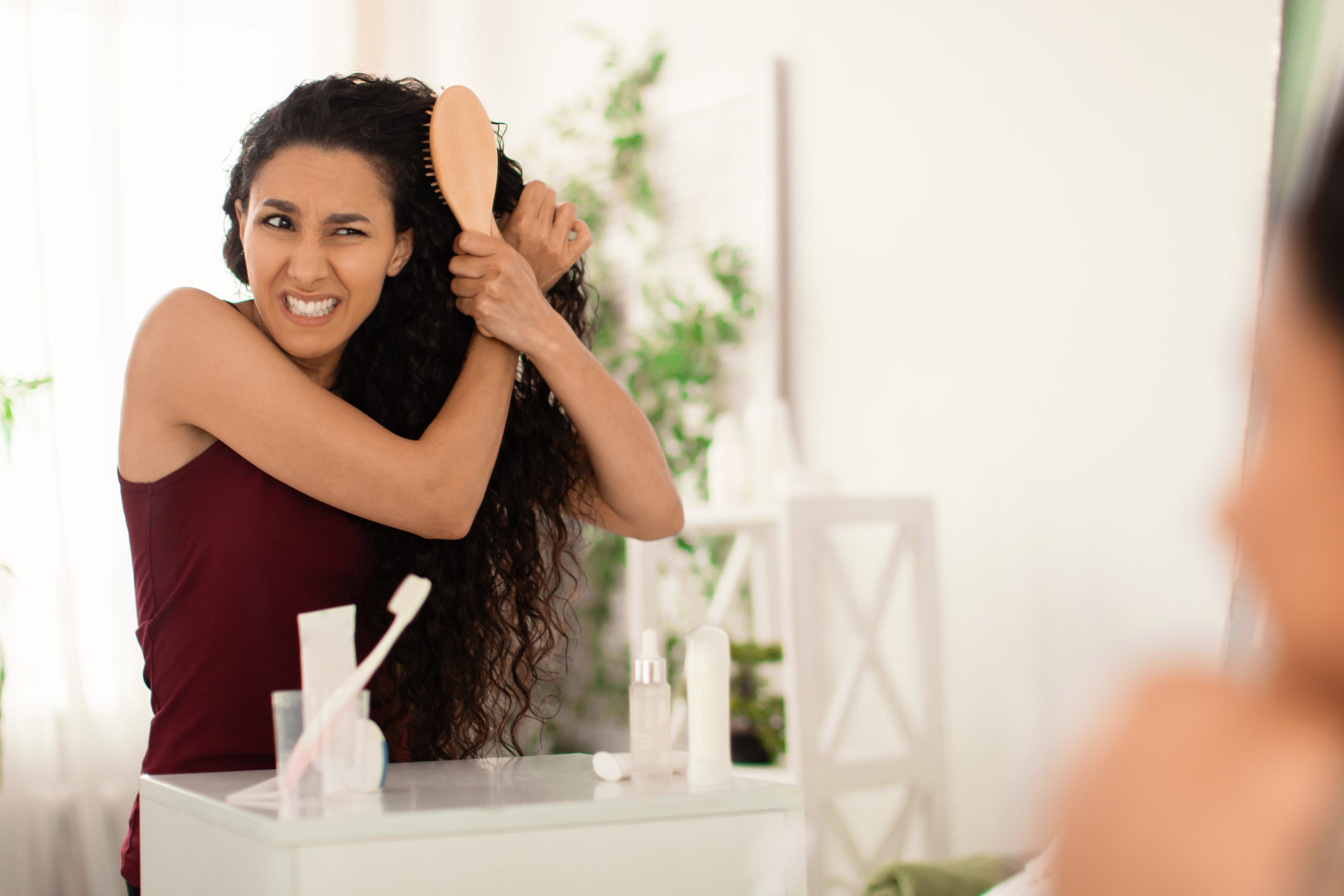
Common Mistakes in Natural Hair Routines and How To Avoid Them
No matter how careful everyone is, certain habits can inadvertently hinder progress in natural hair care. While natural hair is incredibly versatile and beautiful, it also requires delicate and specialized care. Understanding the most common mistakes in a natural hair care routine and how to avoid them can take your hair journey from struggling to thriving.
Overwashing Hair
Washing your hair too often, especially with harsh shampoos, strips away natural oils, making it more likely to become dry and brittle. Natural hair is best when moisturized, so you should generally wash it once a week or less, depending on your scalp’s needs.
How To Avoid:
Use a sulfate-free and moisturizing shampoo and include co-washing (cleansing with conditioner) between washes to keep the scalp fresh, but not dry out the hair.
Neglecting Moisture Balance
Dry hair is one of the most significant problems for natural hair. Many people put heavy products on their hair or skip moisturizing it.
How To Avoid:
Follow the “LOC” (Liquid-Oil-Cream)or “LCO” (Liquid-Cream-Oil) method regularly. Lightly mist your hair daily or as needed and seal in moisture with a light oil or butter that matches your hair’s porosity.
Not Trimming Regularly
Avoiding Trimming is generally detrimental if you want to keep your hair long. Split ends can grow up the length of the hair, increasing breakage and hair loss.
How To Avoid:
Trim your hair regularly every 8-12 weeks to remove any damaged hair. Trimming keeps your hair healthy and makes it look thicker and more beautiful.
Excessive Heat Use Or Heat Use Without Protection
Excessive or incorrect use of hair styling tools, such as flat irons or blow dryers, can damage curl patterns and cause hair breakage.
How To Avoid:
Limit heat use and always use a heat protectant spray or serum. Use low heat and style your hair using air drying, roller sets, twists, and braids when possible.
Product BuildUP and Poor Clarification
Using different types of products many times but not cleaning them properly can cause them to accumulate on the hair and scalp, making the hair dull and inhibiting growth.
How To Avoid
Cleanse your hair monthly with a clarifying shampoo or apple cider vinegar rinse. This removes buildup and refreshes the scalp, allowing subsequent products to work better.
Very Tight Style That Creates Tension Very
Tight braids, ponytails, or buns can cause tension alopecia (hair loss caused by tension), especially at the hairline and ends.
How To Avoid
Choose simple, gentle protective styles and avoid pulling at the roots. Talk to your stylist to avoid too-tight installations and give your scalp a break between styles.
Not Protecting Hair At Night
Friction from a cotton pillowcase can dry out hair, making it frizzy and brittle. If you don’t care for your hair at night, your hair will fail.
How To Avoid
Always use a silk or satin bonnet or pillowcase. To help the style last, keep your hair in a pineapple style or loose braid at night.
Ignoring Scalp Health
Paying attention only to the hair and forgetting the scalp is like watering the leaves of a plant but not providing proper nutrition to the roots. A dry, clogged, or inflamed scalp inhibits hair growth.
How To Avoid
Massage your scalp regularly using natural oils such as jojoba or tea tree. Once a month, do a gentle scalp scrub or detox treatment.
Ignoring Your Own Hair Needs By Following Trends
Not understanding your hair type before trying every new product or technique can waste money, time, and damage your hair.
How To Avoid
Pay attention to how your hair reacts. Choose products and routines that suit your curl texture, porosity, and lifestyle. Trust your own experience over hype.
Impatience and Irregularity
Natural hair loves patience. Not sticking to a routine or changing products too quickly can hinder hair growth and make it difficult to see results.
How To Avoid
Allow at least 4-6 weeks before changing your product or routine. Consistency is key to long-term results.
Discover More Articles On Makeup And Beauty Here
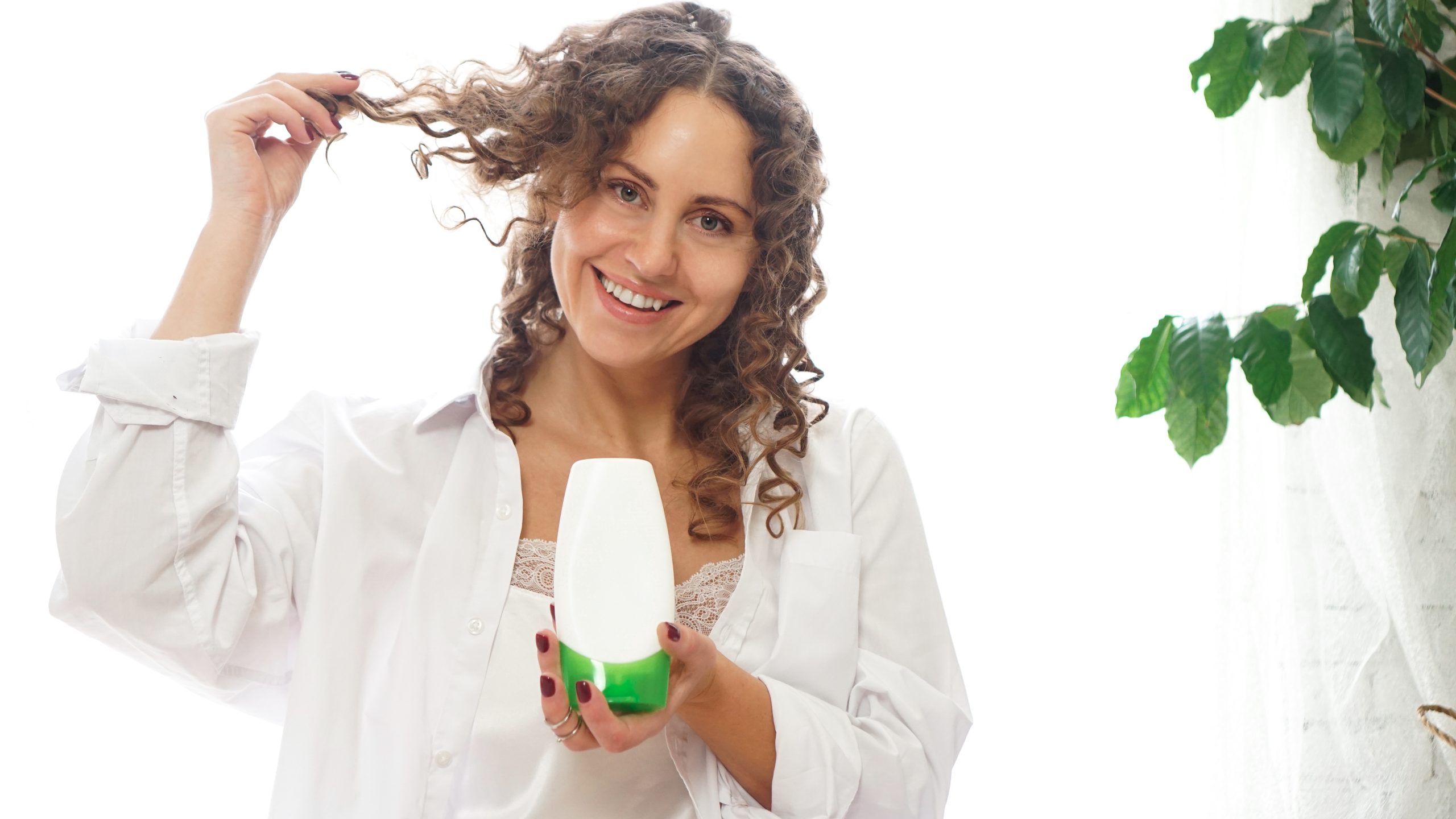
Final Thoughts: On Creating A Sustainable Care Routine For Natural Hair
Creating a sustainable hair care routine for natural hair is not just about choosing the right products- it’s a complete journey built on understanding, patience, and consistency. Natural hair is multidimensional, textured, and uniquely beautiful, but requires international care to keep it healthy. A sustainable routine means finding the method that best suits your curl pattern, porosity, and lifestyle, and sticking to it long enough to achieve long-lasting results.
The most powerful aspect of this journey is that it connects you to your true self. Every twist, coil, and curl has a story; taking care of your hair means honoring that story. Products may come and go, but the foundation of healthy natural hair remains the same: moisture, protection, gentle care, and nourishment from within.
A sustainable routine also considers your time, energy, and mental well-being. Complicated routines with dozens of steps and products can leave you feeling exhausted. Instead, focus on simplicity and consistency: cleanse, condition, moisturize, protect, and repeat. Learn your hair’s cause and take care of it without rushing. If curls are dry, hydrate. If they’re limp, add protein. Your scalp is flaky or itchy, clarify.
Remember, progress can be slow, and there will be occasional setbacks, but that’s part of the process. Be patient with yourself and your hair. Celebrate every growth, every beautiful twist-out, and messy bun day, because they protect your hair.
Ultimately, a sustainable hair care routine should adapt as the seasons, hormones, or health change. The goal is not perfection but stability, balance, and confidence in one’s true beauty.
With commitment, knowledge, and self-love, your natural hair will thrive and empower you.

